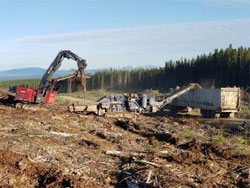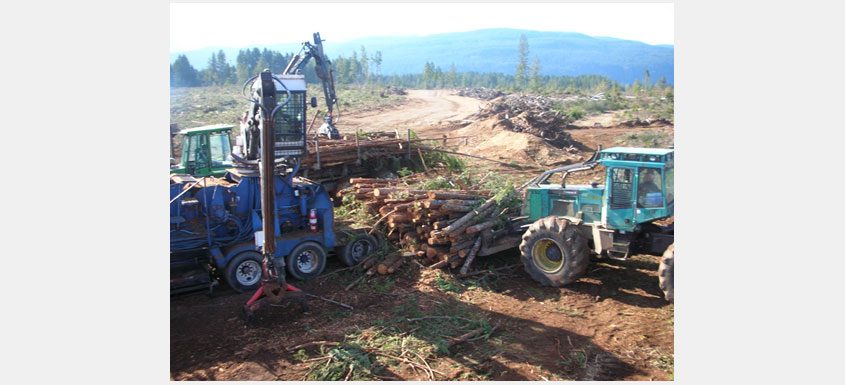The extraction of residual fibre in British Columbia leading to the reduction of open-air burning of harvest residues is the focus of a new webinar series that will be offered in February and March 2021.
Experts from FPInnovations and the B.C. Ministry of Forests, Lands, Natural Resource Operations and Rural Development (FLNRORD) will host six sessions that will get you thinking about better fibre utilization and less burning.
 Why less is more
Why less is more
Reducing the use of open-air burning through better use of residual fibre from timber harvesting and fuel treatments has economic benefits for the forest industry such as offsetting annual allowable cut reductions and providing volume for pulp mills. There are environmental and health benefits, too, as it helps reduce the amount of greenhouse gases and particulate matter (smoke) produced which can affect those living in nearby communities.
Webinar topics
The speakers will address topics such as the utilization of fibre from fuel hazard treatments in small communities, sustainability impact assessments of biomass to bioenergy supply chains, and the laws/regulations surrounding harvest residuals on the coast and in the interior of B.C.
The webinar sessions will be offered on the following dates (in English only):
- February 2: Fire Nations Communities – Linking Fire Protection to Bioenergy Development
- February 9: Sustainability Impact Assessment of Biomass Bioenergy Supply Chains
- February 16: Fibre Recovery Zones and Alternative Scaling Systems (Coastal Version)
- February 23: Fibre Recovery Zones and Alternative Scaling Systems (Interior Version)
- March 2: Forest Carbon Initiative – Successes in Alternative Use of Roadside Residuals
- March 9: FPBiOS Application for Calculating Available Volume in Cutblocks
View this flyer for the time and description of each session. Can’t make one that interests you? Not to worry, as the sessions will be recorded so you can view them at a later date.
These webinars follow last year’s successful series on climate change impacts on the design of resource road stream crossings. The presentations showed how to use several publicly available interactive map tools for British Columbia for use in crossing design, highlighted the tools’ limitations, and discussed data portals and how professionals are integrating climate change into design flood hydrology through case studies. The recordings of last year’s webinars are available through the Government of British Columbia website.
Who should participate?
Although the webinars will have a British Columbia focus, they are open to anyone with an interest in managing woody fibre and are free to all.
Contact
Source: FPInnovations













